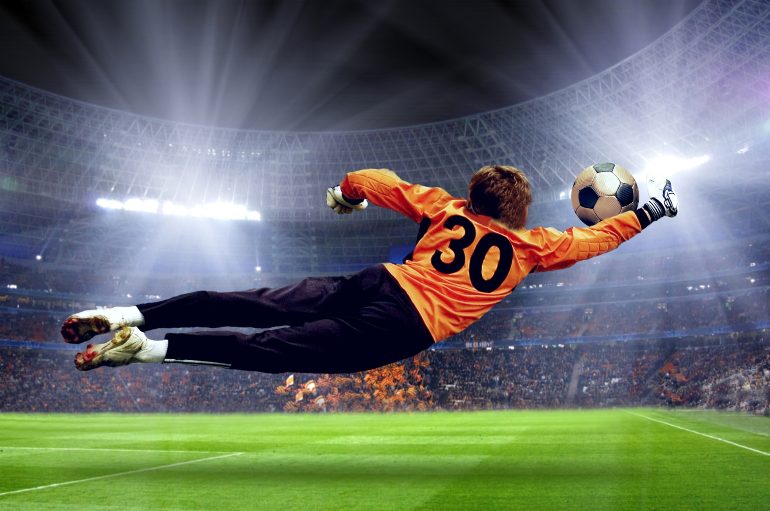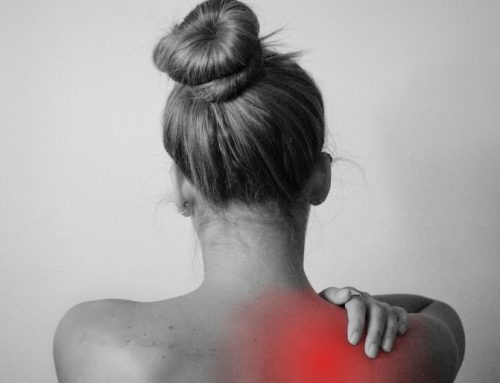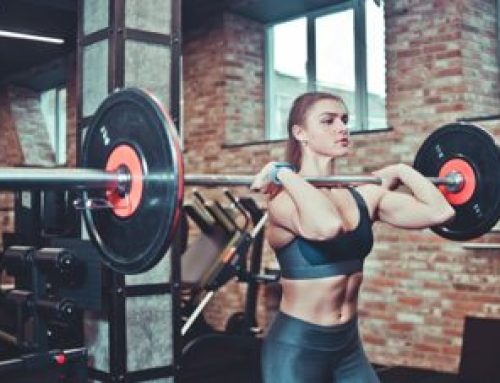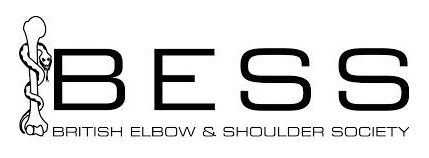Football is the world’s most popular sport and is played from the remotest of villages across the globe to state-of-the-art stadiums in front of thousands of fans, with millions more watching at home. Although traditionally considered a ‘boy’s or man’s game’, women’s football has gained widespread popularity in recent years, resulting in a surge of young girls taking up football each year.
Football is fast-paced, physically intense, and often involves high-impact collisions. As with any sport, injuries can occur, and although football may be considered predominantly a lower-limb sport, you may be surprised to learn that upper-limb injuries are also common.
This article is aimed at anyone who plays or coaches football, those involved in first-line care of football injuries, or anyone who enjoys and follows the sport. I will discuss common football shoulder injuries and outline a treatment strategy.
A recent study from Brazil recorded injuries from two professional football leagues between 2016 and 2019, covering 3828 matches or 127,357 hours of play. Shoulder injuries accounted for 4.3% of all injuries. 60% of injuries occurred in the second half of the game when players were more fatigued.
Position matters.
Goalkeepers and defenders are twice as likely to sustain shoulder injuries as central or attacking players.
The goalkeeper is the only player on the football field allowed to touch the ball with their hands whilst the ball is in active play. The keeper repeatedly reaches upwards and outwards with outstretched arms and often throws themselves quickly off their feet, landing heavily onto their shoulder to save a goal. This means the goalkeeper is more vulnerable to shoulder injuries.
Outfield players, by contrast, do not touch the ball directly with their hands unless they are throwing it in from the sidelines. These players are more likely to get injured if another opponent tackles them or they lose their balance and land heavily on the ground.
What are the most common Shoulder Injuries in Football?
The shoulder girdle has three bones and two joints; each structure is susceptible to injuries.
The bones are the scapula (shoulder blade), humerus (arm bone) and clavicle (collar bone).
The acromioclavicular joint (ACJ) is formed between the clavicle and the scapula. The glenohumeral joint (GHJ) is formed between the scapula and the humerus.
In the Brazilian shoulder study the incidence of shoulder injuries included:
- 37.38% glenohumeral joint dislocations
- 35.51% acromioclavicular joint dislocations
- 3.7% rotator cuff tears
- 1.9% clavicle fracture
- 1.9% proximal humeral fracture
Shoulder Dislocations
A dislocation occurs when the two articulating surfaces of a joint lose complete contact. It can affect both the acromioclavicular (ACJ) joint and the glenohumeral (GHJ) joint.
Glenohumeral joint dislocations
In these injuries, the upper arm bone (humerus) is forced out of contact with the shoulder socket (glenoid bone of the scapula). This can happen due to either a direct blow to the shoulder, when putting the arm outwards to fend off an opponent, or an awkward landing after a tackle.
The shoulder pain is immediate and the joint needs to be put back in place as quickly as possible, ideally on the side of the pitch. Further treatment depends on which structures have been damaged.
The joint is held together by a series of ligaments, muscles, and other soft tissues, and any of these may be torn. A ring of rubbery tissue called the glenoid labrum surrounds the bony socket (glenoid) of the scapula.
The labrum is almost always damaged in a dislocation. Several studies have shown that if the player is male, young (<20 years old) and plays collision sport, there is over 95% chance that the shoulder will dislocate again.
An MRI scan should be done to assess the damage to the shoulder. If only the labrum is torn, an arthroscopic (keyhole) repair can stabilise the shoulder. If the bone (s) are also damaged, a bone graft may be needed, which is done with an open incision.
In either case, the arm should be rested in a sling for four weeks after surgery, followed by a course of extended physiotherapy to regain function. The average recovery for return to play from this type of surgery is between 3 and 6 months.
Acromioclavicular joint dislocations
The acromioclavicular joint (aj) is usually dislocated after a heavy fall, and by landing directly on the outer part of the shoulder. There is immediate pain, and a lump is visible on the top of the shoulder due to the edge of the clavicle bone that moves upwards.
The ac joint is stabilised by three ligaments: the acromioclavicular ligament and two coracoclavicular ligaments.
There are different grades of injury severity from Grade I to VI, depending on how many ligaments have been torn and the clavicle’s position.
Grades I and II are fairly minor injuries affecting the acromioclavicular ligament. If the AC ligament is stretched but intact, this is known as Grade I. If it is torn, it is a Grade II injury. In both these injuries, the coracoclavicular ligaments are intact, so the clavicle remains in a good position relative to the scapula. These injuries can be treated by resting the arm, applying ice packs, and taking anti-inflammatory medication.
In Grade III injuries, the coracoclavicular ligaments are ruptured, and the clavicle moves upwards relative to the scapula. The weight of the arm pulls the shoulder down from the clavicle, further contributing to an obvious bump at the top of the shoulder. There are differing opinions amongst shoulder surgeons about whether these injuries require surgery. Some prefer to treat these with physical therapy, whilst others prefer surgical reconstruction. I believe each case should be evaluated according to the individual patient.
In footballers, it depends on what level they are playing. If the patient is an adolescent who plays for fun, then a non-operative approach may be sufficient. If the player is a professional, surgical reconstruction may be needed, but surgery can usually wait until the end of the football season, which gives a chance to see how the shoulder performs in competitive play.
If the player can return to pre-injury athletic performance, then surgery could be avoided completely. If there is ongoing pain, it would be best to repair the joint.
AC joint injuries grade IV, V and VI will require urgent assessment by a shoulder surgeon and surgical reconstruction.
Rotator Cuff Injuries
The rotator cuff muscles are four muscles that surround the glenohumeral joint. Each muscle arises from the scapula and forms a tendon before inserting into the humeral head. As a group, the rotator cuff muscles work to centre the humeral head relative to the glenoid. The subscapularis muscle moves the arm inwards or towards the body.
The supraspinatus moves the arm upwards and away from the body and the infraspinatus and teres minor rotates the arm outwards and away from the body. Any of these muscles can tear from acute trauma or repetitive stress. Supraspinatus is the most commonly torn tendon. Symptoms include pain, weakness, and difficulty lifting the arm. Surgical reconstruction is recommended if the tendon is completely torn. This can usually be performed with keyhole surgery.
After surgery, the arm needs to be rested in a sling for four to six weeks, and then a course of extended physiotherapy is required to regain function. The average recovery from this type of surgery is between 3-6 months.
Fractures
Any of the three bones in the shoulder girdle can break or fracture. The clavicle is the most commonly fractured bone.
Treatment depends on which part of the bone has broken, how many pieces it has broken into, how displaced the bony fragments are and whether other soft tissue structures have been damaged.
Bones in the shoulder, such as the clavicle (collarbone) or the scapula (shoulder blade), can fracture from direct impacts or falls.
Prevention Strategies for Football Shoulder Injuries
In 2016, the Federation of International Football Association published the FIFA 11+ injury prevention program. This is a warm-up protocol that focuses on three key areas
- Core training to improve hip and trunk stability
- Neuromuscular control and balance
- Plyometrics and agility
The warm-up takes 20 minutes and consists of 3 stages with 15 exercises in a specific sequence, including running and strength exercises.
In a systematic review that included 6,344 players, the FIFA11+ protocol reduced injury risk by 30% overall.
The FIFA11+S was developed specifically for the upper limb.
The program consists of three parts:
- General warming-up exercises
- Strength and balance exercises of the shoulder, elbow, wrist, and finger muscles
- Advanced core stability and muscle control exercises
In a randomised controlled study of 726 goalkeepers, players who had implemented this protocol reported a 70% reduction in upper limb injuries.
Immediate Response to Shoulder Injuries
If a shoulder injury occurs during training or a match, immediate and appropriate action can significantly improve recovery.
1 – Stop playing and assess the shoulder
Continuing to play with a shoulder injury could potentially worsen the condition. Stop playing immediately, assess the range of movement, and look for any obvious bumps around the shoulder.
2 – Dislocations
If the glenohumeral joint is dislocated, getting it back in place is the priority. If this is the first dislocation, ideally, find someone with experience relocating the shoulder joint, such as a physiotherapist or coach. If this cannot be done pitch-side, then go to the nearest emergency department, as it may require strong painkillers to help relax the muscles and allow the joint to be manipulated.
3 – Apply Ice
Ice can reduce swelling and pain. Apply an ice pack to the injured shoulder for 15-20 minutes every couple of hours during the first 48 hours after the injury.
4 – Fractures
It is important to attend an emergency unit or minor injuries unit to get an X-ray to confirm if there has been a fracture. Resting the arm in a sling offloads the weight of the arm and is more comfortable. Seek an urgent orthopaedic shoulder specialist review for further advice on whether the fracture needs surgical treatment. Make an appointment here.
5 – Immobilise the Shoulder
Using an arm sling supports the weight of the arm, prevents further movement, and reduces pain. It keeps the shoulder stable and comfortable until a proper diagnosis is made.
6 – Seek Medical Attention
Consult a healthcare professional as soon as possible for an accurate diagnosis and appropriate treatment plan. X-rays or MRI scans may be necessary to determine the extent of the injury.
Long-Term Care and Maintenance
1. Regular Check-Ups
Periodic evaluations by a healthcare professional can help monitor shoulder health and prevent future issues. Regular assessments can detect early signs of overuse injuries or imbalances.
2. Consistent Strengthening and Flexibility Exercises
Incorporate shoulder-specific exercises such as the FIFA 11+S, into your routine, even during the off-season. Consistent strength and flexibility training can maintain shoulder health and prevent future injuries.
3. Listen to Your Body
Pay attention to any signs of pain or discomfort in the shoulder. Early intervention can prevent minor issues from becoming major injuries. Don’t ignore persistent pain—seek medical advice if needed.
4. Mental Health and Well-Being
Injury recovery can be mentally challenging. Stay positive, seek support from teammates and coaches, and consider speaking to a mental health professional if needed. A positive mindset can significantly impact the recovery process.
5. Gradual return to play
Returning to football should be gradual and guided by a healthcare professional. Rushing back too soon can lead to re-injury. Follow a structured program that progressively increases activity levels while monitoring for any signs of pain or discomfort.
Conclusion
Football shoulder injuries are a common and often inevitable part of the sport, but understanding how to prevent and respond to them can significantly affect a player’s career and overall health. Players can reduce their risk of injury by prioritising proper warm-up routines, strength training, and technique.
Should an injury occur, immediate and appropriate action, followed by professional medical care and a structured rehabilitation program, is crucial for effective recovery. With the right approach, football players can maintain shoulder health and continue to enjoy the game they love.
If you have any questions or concerns about a shoulder injury, make an appointment here.
Ms Susan Alexander is a Consultant Orthopaedic Surgeon and President of the Independent Doctors Federation.
She specialises in all shoulder conditions, including frozen shoulder, rotator cuff tears, dislocations and arthritis. Based in London, she practises at Fortius Clinic and King Edward VII’s Hospital. Ms Alexander is highly experienced in minimally invasive (keyhole) shoulder surgery and is known for her meticulous, patient-centred and holistic approach.
She focuses on accurate diagnosis, bespoke treatment planning, and ongoing support throughout recovery. Learn more about Ms Susan Alexander here.











